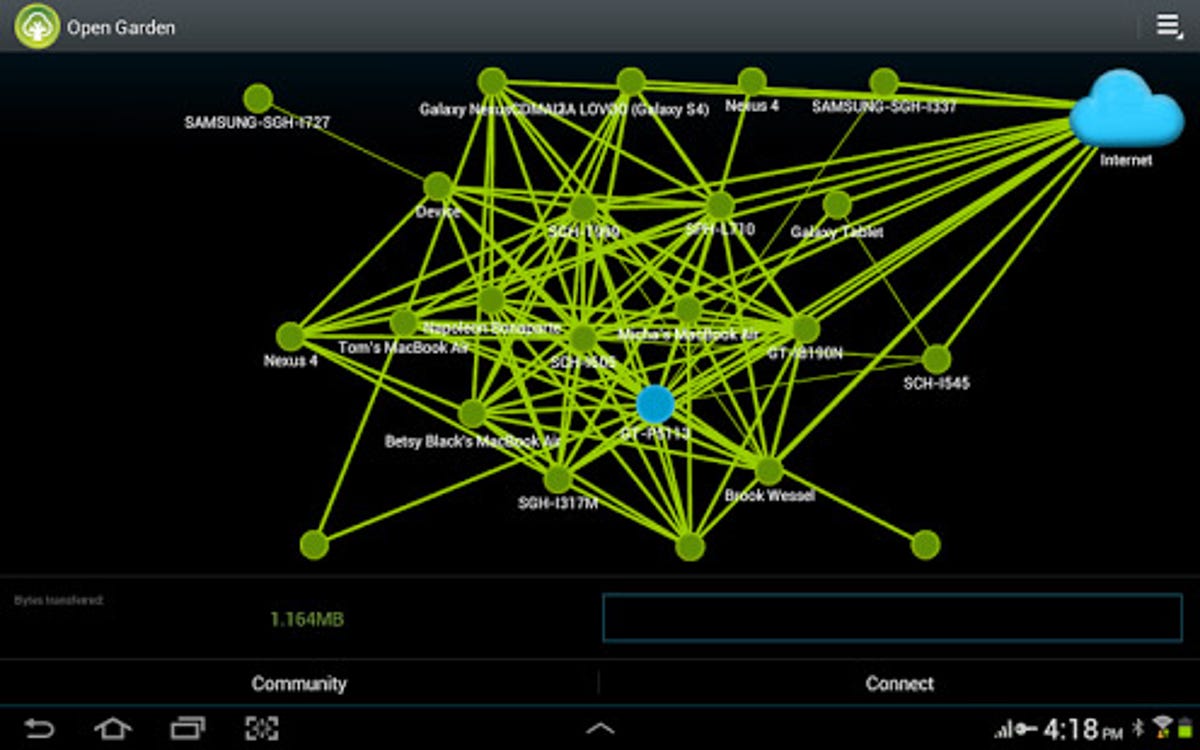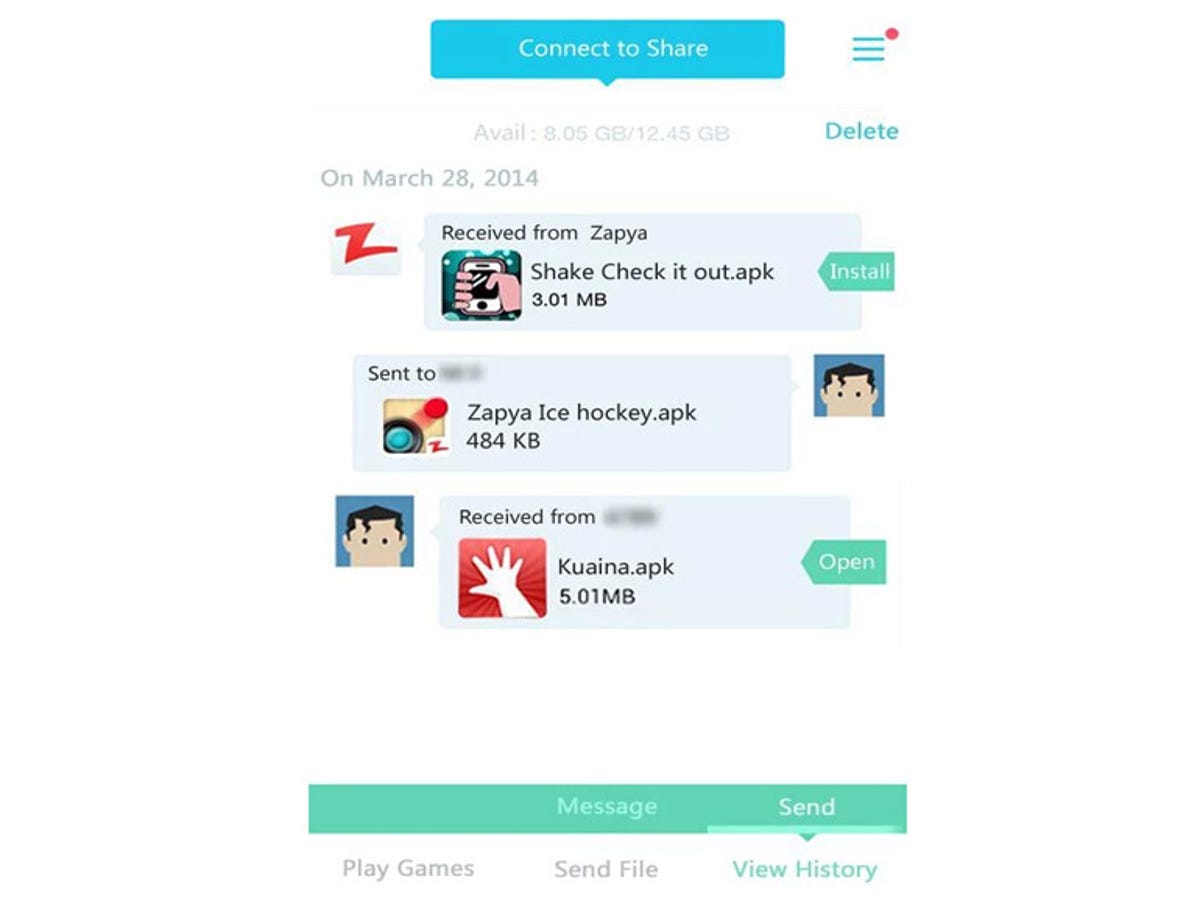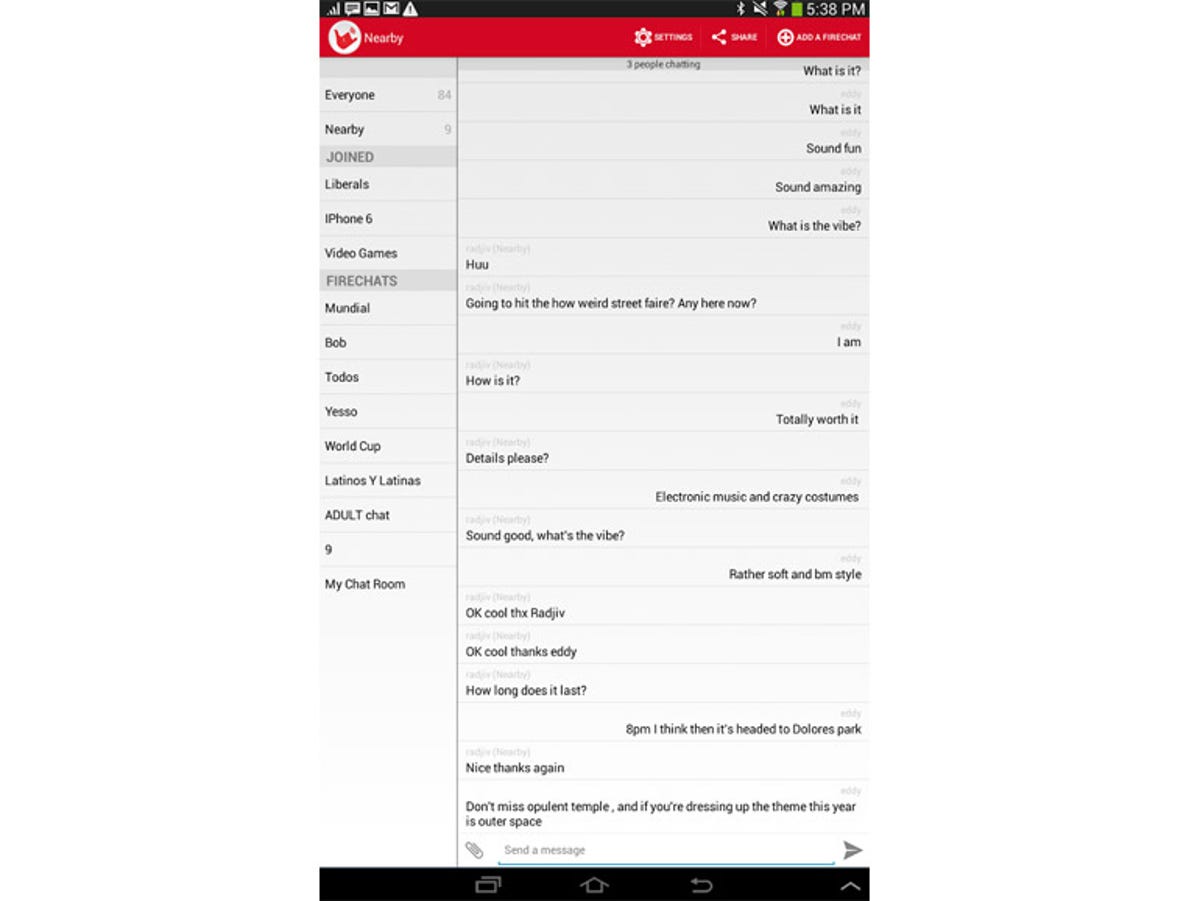
Open Garden
It’s hard to imagine being without an Internet connection while we’re constantly surrounded by 3G, 4G and Wi-Fi connectivity. But in poverty-stricken countries, using a smartphone without an Internet connection is a daily reality, and users ration their Internet connection time carefully. Even a fully loaded SIM card and unlimited data roaming isn’t a guarantee, when you could be in the middle of the wilderness, when the government cuts of the connection during protests or when a storm simply knocks out your essential services.
But today’s smartphones seem to be able to do anything. The sheer ingenuity of software developers and the ample methods of connectivity for modern smartphones have made it possible for smartphone users to chat, swap and store files, play games together and even organise large-scale protests — all without a traditional connection
File transfers
Way before Dropbox and Google Drive, there was an infra-red transceiver on old mobile phones which could send small amounts of data, such as your contact information, from one phone to another. Today’s smartphone takes the next step with high speed Wi-Fi and Bluetooth, which can easily send gigabytes of data from one phone to another quickly, without taking a chunk out of your data plan allowance.


Zapya
Zapya is one of the new generation of file transfer apps which enables users to transfer songs, videos, apps and data files from one phone to another, using a combination of Wi-Fi and Bluetooth. Apps like Zapya are multipurpose — they support connected multiplayer games and chat applications.
It can even install itself from one Android phone to another without an Internet connection. Being cross-platform, it becomes much more useful than single-platform protocols like Apple’s AirDrop and Android Beam.
In some developing countries, people who have saved enough to buy their first mobile phone usually go to the phone store with their favourite Zapya buddy — the one who has a big SD card on their phone with lots of games, videos and songs — and the first thing installed on the new phone is Zapya, after which the next couple of minutes (or hours) are spent sharing the goodies.
Specialized applications like Superbeam and Wi-Fi File Transfer easily and very quickly transfer files between phones using the standard Wi-Fi Direct protocol. Transfers can be initiated just by touching phones to each other, or by scanning a QR code.
Multiplayer games with peer to peer connectivity
Many games take advantage of peer to peer connectivity to make local multiplayer mode possible without an Internet connection. Hits like Minecraft Pocket Edition, Real Racing and Badland are very playable and perhaps even more responsive than they would be if played over the Internet.
Youths in developing countries and kids with smartphones are the acknowledged local multiplayer gaming experts, since many of them don’t have data plans. They congregate after work or school and connect their smartphones together for an intense gaming experience.
Messaging
Firechat made the news when it was revealed that the student protesters in Hong Kong used the messaging app to coordinate their protests. Firechat connects using another sophisticated mesh networking app called Open Garden, using the phone’s Wi-Fi and Bluetooth circuitry, so it will continue to operate even if the government shuts down the mobile network. It also makes it more difficult for the authorities to tap the cellphone network to spy on their plans.


FireChat
Internet Sharing
Open Garden uses the mobile phones’ Wi-Fi and Bluetooth functions to connect devices to each other to share data and connections. Besides being able to drive chat apps like Firechat, Open Garden shares Internet connections between laptops in a mesh-like structure, enabling a few Internet connections to be shared among many devices with the app installed.
For example, a group of 20 users with Open Garden installed could all access the Internet even if only two or three of them had Internet connections. As more users get on the mesh network, the network becomes faster and more efficient. If the some of the Internet connections are cut, the rest could still rely on the remaining connections, and still maintain connectivity despite a slowdown in Internet access speeds.
Distributed storage without Internet access
Cloud storage relies on the Internet to connect users to huge datacenters. Distributed storage protocols, like Maidsafe, allow devices like PCs and mobile phones to contribute excess storage and CPU power to a mesh network which makes the crowd a giant, decentralized datacentre. This makes it difficult for governments to snoop on private data, and if the mesh network is large enough, helps prevent massive data loss in case disaster strikes an entire data center.
While there are myriad solutions for offline connectivity between our smart devices, a lot of it still remains in the geek-only domain in developed countries. What is required is an integration of all these new services into an open standard, to promote further development and refinement of these technologies. The promise of privacy, robustness and cost reduction, together with a disaster-resistant connectivity, should spur these technologies to reach the mainstream even in developed countries.




